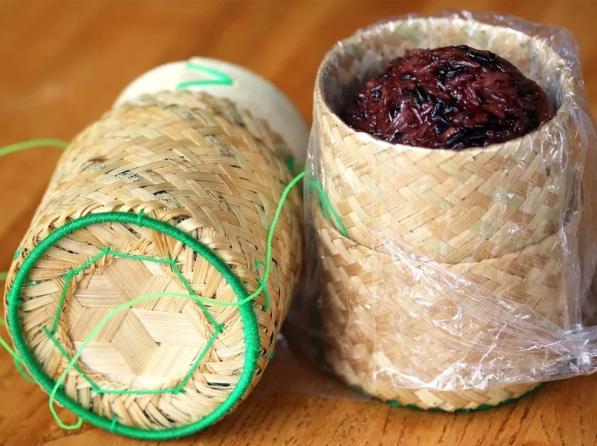
Rice is perhaps the most fundamental food in Laos, forming the basis for every meal. It’s often the first dish that home cooks, usually women, learn to make. Luangrath, for example, learned from her grandmother how to make khao niew, or sticky rice.
According to Syhabout, there are 40-plus ethnic groups in Laos, each with its own food preferences and traditions. Though he describes once sharing a meal with the people of a mountain tribe who eat non-glutinous (i.e., non-sticky) rice, for many if not most people in Laos, sticky rice is the go-to variety. Syhabout attributes this to the fact that Lao people eat with their hands. “Sticky rice is like a utensil,” he says, comparing it to the fermented Ethiopian bread injera.
In Laos, sticky rice is cooked in a thip khao, which literally means “rice basket.” These flexible baskets are made from dried stalks or reeds; more elaborate versions have patterns woven into their sides or lids. Sizes vary, from small and personal to large enough for an extended family, although cooking is more commonly done in the larger versions. In restaurants, smaller and more intricately decorated thip khaos may be used as serving vessels after the rice is cooked in a larger basket.
Lao sticky rice is medium-grain, generally white, and somewhat pearlescent, although there are different varieties. It’s commonly steamed in a triangular thip khao suspended over water; it can also be shaped into thin cakes after steaming and then deep-fried, which causes it to puff and crisp, making for some wonderfully crispy rice cakes.
Web editor: Wang Xiaoxuan
Reviewer1: Zhang Yanlan
Reviewer 2: Pang Bo
Reviewer3:Tang Caihong
